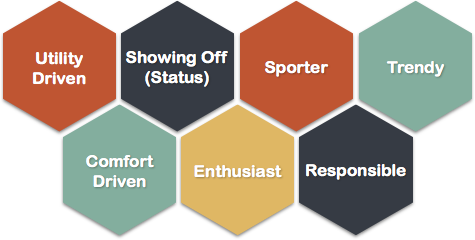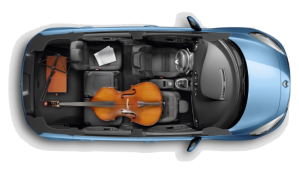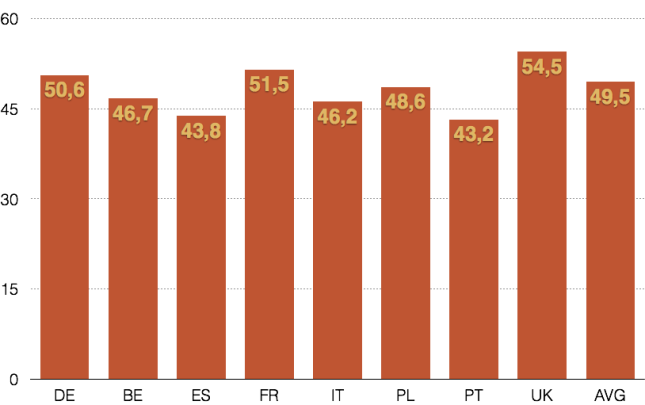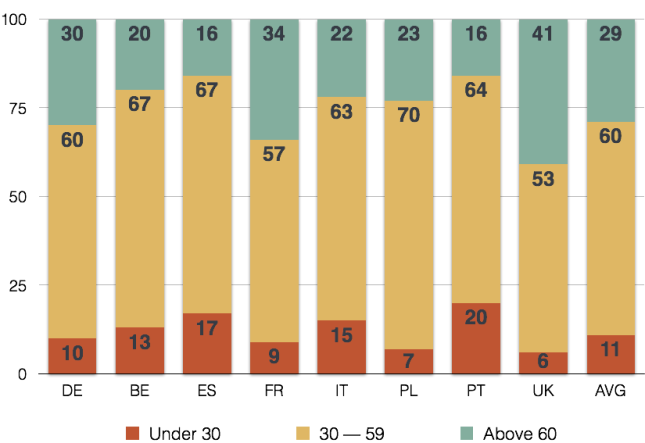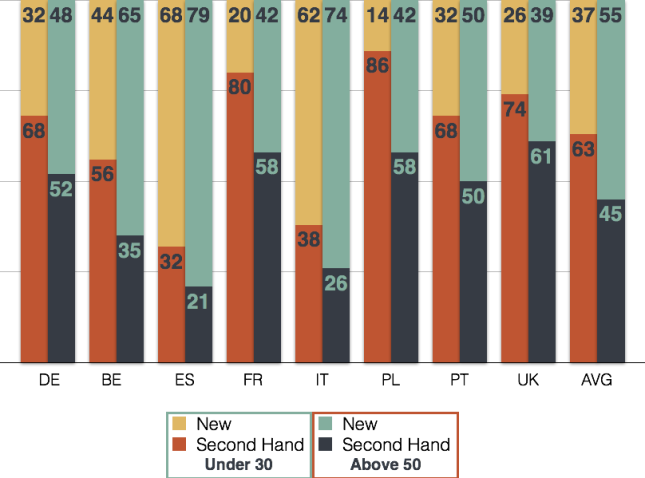Market segmentation allows the efficient distribution of products and services to the right consumers. It eliminates or mitigates threats, creates opportunities and consolidates a brand or company reputation vis-a-vis other brands in the minds of the targeted consumers. A competitive industry, such as the car manufacturing industry, uses this concept in order to eliminate product and service homogeneity. Two of the segmentation types generally utilised are Psychographic and Geographic segmentation.
Psychographic Segmentation
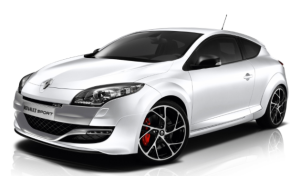
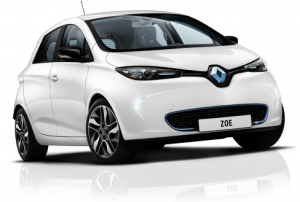 They tend to have a strong feeling of social responsibility. They often feel burdened by the global impact of their decisions, hence; minimising negative outcomes is a high priority. While choosing a car he/she will pay careful attention to levels of CO2 emissions, rate of fuel consumption, kind of fuel and materials used for manufacturing. Their ideal car would be an electric version, as long as it meets his/her budget.
They tend to have a strong feeling of social responsibility. They often feel burdened by the global impact of their decisions, hence; minimising negative outcomes is a high priority. While choosing a car he/she will pay careful attention to levels of CO2 emissions, rate of fuel consumption, kind of fuel and materials used for manufacturing. Their ideal car would be an electric version, as long as it meets his/her budget.Geographic Segmentation
The fact that we cannot please everyone all the time is one of the reasons why car manufacturers employ geographical segmentations. This marketing concept/component,helps then to identify and narrow down their intended target. By dividing the market into metropolitan,suburban or rural areas, the segmentation allows OEM to efficiently serve consumers needs, increase profit and gain market shares.
Volkswagen and Renault are not immune to this practise and as such , have strong worldwide presence. It allows them to get close to their current and future consumers effectively. Both companies have factories or assemblies lines in many parts of the world thus, target markets enjoy minimum delay in delivery , implementation and service. In the case of VW, there are six key geographical regions working efficiently to maintain continuous growth and fulfill their particular goals requirement (North America, Western europe, Eastern Europe, China, India, South America ) These regions are subsequently divided accordingly into rural and metropolitan areas. In all, VW operates in 153 countries while Renault also has a very important world presence currently operating in 128 countries.
Fig. 1 and Fig 2 illustrate the geographical presence of this two companies around the world.

Fig 1
Source: [wiki]

Fig.2
Source: Renault Group
In the european geographical segment, VW clearly dominates the market starting from the mid 2005. On the other hand, Renault saw declining sales from the same time period on forward, although market share enjoyed a slight recovery by the third quarter of 2014. Nevertheless, it the company finds itself far behind the german car maker giant. The competition has been fierce and it seems that Renault is having a very difficult time to regain lost market shares.

Source: Left Lane
These two market segmentation, provide crucial information about the consumer and their taste
Demographic Segmentation
Is another crucial kind of segmentation. Overall statistics of European car market shows that the average age of new car buyers is relatively high. CETELEM survey shows that the average new car buyer is 49.5 years. Further observation indicates that there’s not significant deviation from the average point. For example, in the UK, where the number reaches the extreme point is at 54.5 years old compared to the lowest point of 43.2 years old in Portugal.
Such high ages segments of new car buyers may be explained or attributed to the relatively high unemployment levels found within European younger market segments. However, a paradoxical trend can be observed in Spain. The country has the highest youth unemployment rate amongst all others in the list (except Portugal), but yet, is in the second position regarding youngest average age of new car buyers. So…correlation is yet to be found.
Further investigation shows, that only 11% of buyers are younger than 30 and 29% are older than 60; with most of young drivers in Portugal(20%) and most of elderly in UK(41%).
The next graph shows relative buying decisions regarding novelty of vehicles, divided in two age-groups.
Here again Spain surprises with relatively high ratio of new cars in younger population. In France, on the other hand, the younger consumer, prefers second-hand vehicles.
In all, older European consumer populations shows a shifts in their behavioral patterns and buying decisions. Age groups that are responsible for most of the demands observed on the car market are essentially comprise by, those who either have started families or retired.
Consumer Analysis:
Part 3 — Segmentation
